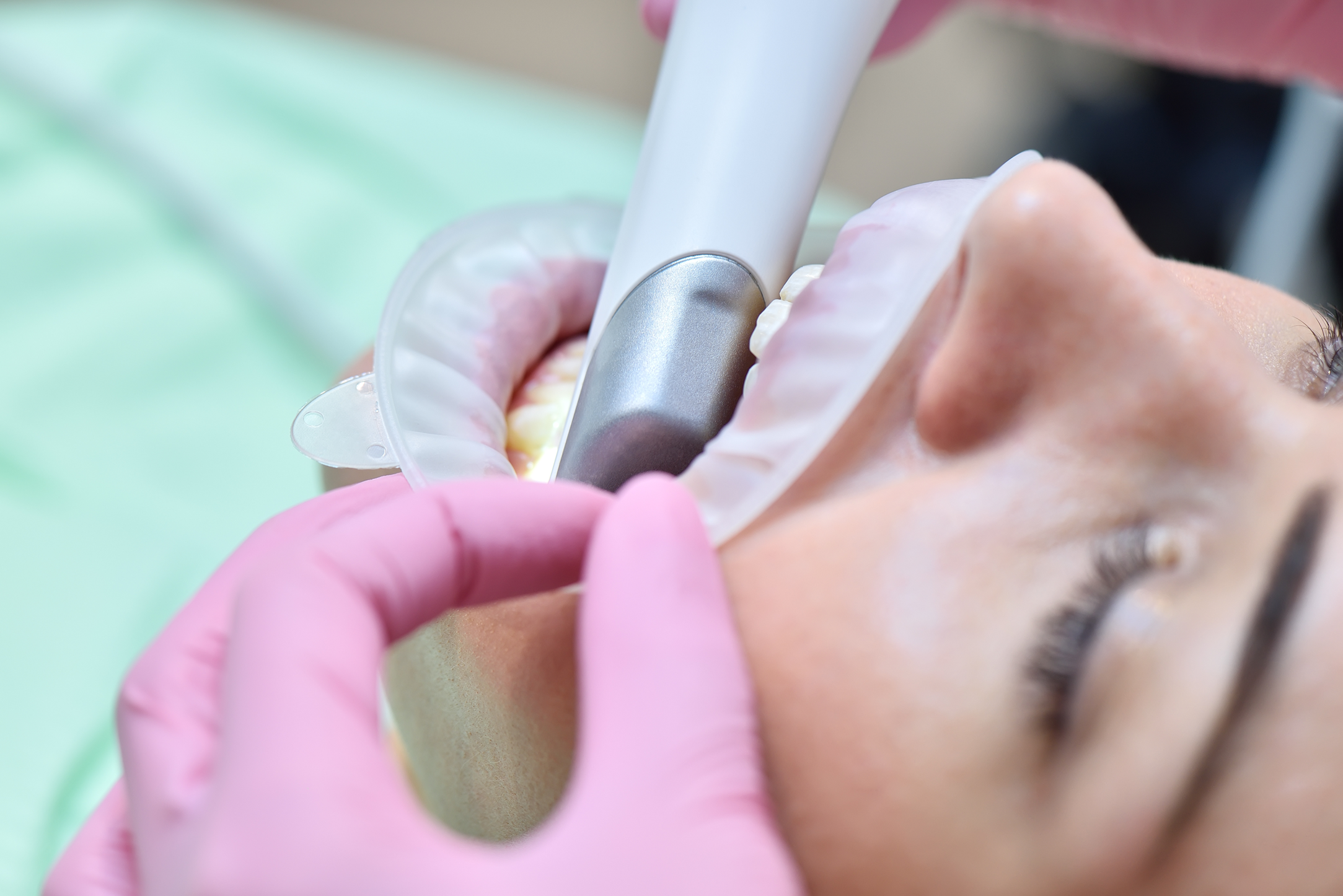The full digitization of your dental practice cannot be accomplished overnight. In recent years, more and more options have become available for setting up a digital workflow in your everyday work. This also includes the intraoral scanner. It replaces conventional plaster models with modern digital scanning technology.
What are intraoral scanners?
Intraoral scanners create digitized dental impressions. In a way, they are drivers for the digitization of dentistry. Depending on the manufacturer and device, you will find different types of application, handling, and quality as well as modes of operation. The main difference between conventional impression taking with plaster models and intraoral scanners, however, is that the latter work completely contactless. They scan the surfaces of the dentition in the oral cavity and create point clouds to form a digital image. A 3D model is then automatically generated and displayed on the screen.
Advantages of intraoral scanners
Digital scanning workflows have many advantages. They save a considerable amount of time, as the three-dimensional model is automatically generated during the scanning process. This in turn saves on personnel resources, as plaster casts become obsolete. Digital files help cut transport costs for the models (e.g., deliveries to orthodontists or dental technicians). Apart from that, sources of error can be minimized.
In addition, digital models can be archived and retrieved at any time – in other words, no storage space is required. You can immediately process the generated data and discuss findings with your patients. Digital scans generally increase patient comfort, as there is no need to take impressions. The ecological aspect should not be neglected either. Intraoral scanners eliminate waste. If you do need a physical model, it can be 3D printed at any time.
Profitability and conclusion
Despite all the advantages, cost-effectiveness is an important issue. The acquisition costs of between €15,000 and €45,000 are quite high. Depending on the provider, you might even have to pay scan fees from €1,000 to €4,000 annually. However, software updates are included.
Analog processes in your dental practice cannot be digitized overnight either. This will require a lot of work, time, and also money. After all, you and your employees have to get used to these new workflows. The sheer number of providers and different devices can be overwhelming at first. It is therefore advisable to intensively research the subject beforehand and, if necessary, seek professional advice.
For all these reasons, the question of whether a digital scanner is worthwhile for your dental practice cannot be answered with a simple yes or no. Many individual factors such as frequency of use or actual time and cost savings play a role. However, the path toward more digitization is certainly an important step for building a future-proof practice that brings significant added value not only for you but also for your patients.
